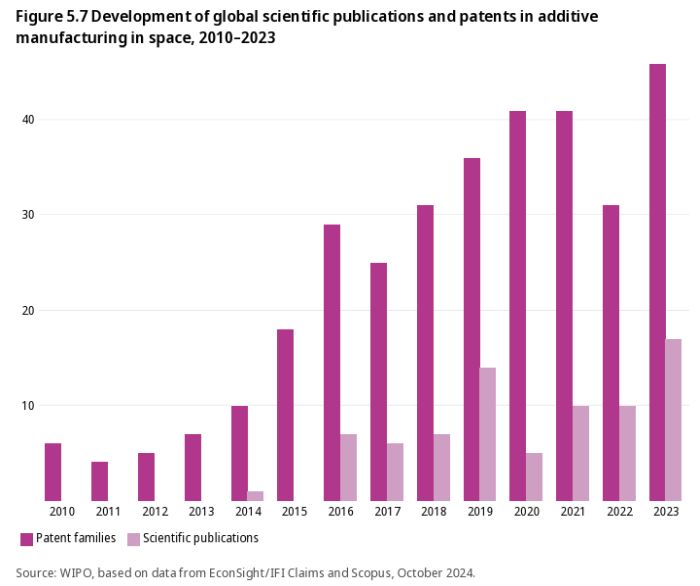A recently published report from the World Intellectual Property Organisation (WIPO) takes a close look at the "Future of Transportation", based around four principal transportation means – land, sea, air, and space. Perhaps unsurprisingly, one of the technologies identified as key in the development of sustainable and efficient vehicle production is additive manufacturing, also known as 3D printing.
Interestingly, the report devotes an entire chapter to additive manufacturing in space, a topic recently explored by my colleagues Stephen Hunt ("Printing Labs for Microgravity"), and Thomas Storey ("3D Printing on the Moon"). This technology provides obvious advantages over conventional manufacturing techniques; components can be printed "off-planet", as needed, using the same feedstock to produce different parts, and structures which could never be transported in existing launch vehicles can be manufactured and assembled in space.
Of course, there are also many challenges, not least the need to test space-printed components to see whether they perform as reliably as those printed on Earth. And unless it becomes possible to mine materials and convert these into feedstock in space, all components still need to be obtained by material transported from Earth.
However, as the WIPO report illustrates, research and development in this field has accelerated massively over the last decade, as evidenced by the number of patent application filings and scientific publications (see below). It therefore seems very possible that many of these challenges will be addressed in the decade to come.

Marks & Clerk's space technology team has a wealth of expertise in this field - and as members of both the Space Network and AMUK, the UK's trade association for the 3D printing eco-system, we are uniquely placed to assist you in protecting your valuable intellectual property - on Earth, and in space.
Additive manufacturing (AM) in space, also known as in situ manufacturing, is a process that creates objects layer by layer using locally available resources and adapting to the space environment's constraints. This technology aims to support long-term space missions, by reducing dependency on Earth-supplied materials and enhancing the sustainability of space exploration. AM in space allows for the creation of larger structures directly in space, bypassing limitations imposed by the size of launch vehicle fairings. It also significantly reduces costs, by allowing the production of necessary components on-site, minimizing the frequency and cost of resupply missions.
The content of this article is intended to provide a general guide to the subject matter. Specialist advice should be sought about your specific circumstances.


